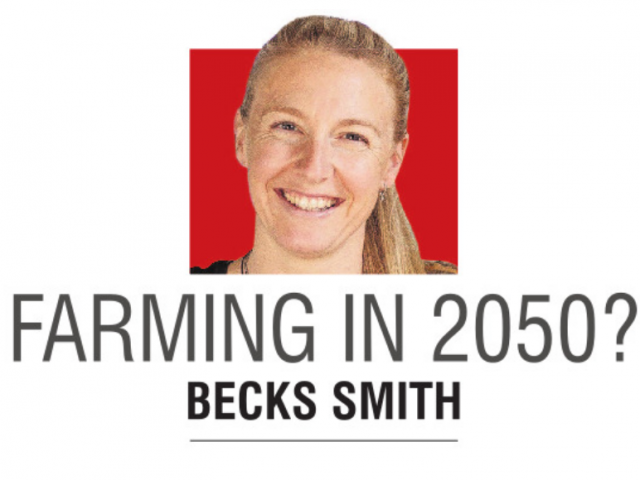
For decades, the story of agriculture has been written in kilos: kilos of meat, kilos of milk solids, kilos of wool. By 2050, we’ve shifted from "trading kilos" to producing health.
Farmers are no longer simply food producers; we are part of an integrated healthcare system. The meat, milk, plants and fibre we grow are valued not just for their volume but for their contribution to the health of people, animals, and the land itself.

This change has been driven by necessity. Climate change, with its increasing frequency and intensity of floods, droughts, and storms, forced us to rethink resilience.
Every farmer has seen the impact; from slips that close roads for months, floods that wash decades of topsoil away in a flash to seasons that no longer follow familiar patterns.
At the same time, mental health challenges reminded us that wellbeing can’t depend on external factors like commodity prices or weather patterns alone.
Research has shown only 10% of our happiness comes from outside circumstances, while 40% is determined by how we think and act. That was confronting for many of us, but also empowering: if we can be part of the problem, we can also be part of the solution.
Our social licence to farm was also tested. Communities rightly asked why they couldn’t always access the same high-quality products we exported overseas.
Rising rates of ill-health and food insecurity in our own backyard reminded us that "feeding the world" means little if we don’t start by nourishing our neighbours.
Over time, we continued the evolution from a "productivity at all costs" mentality, the one that farmed us out of the 1980s, to a more balanced way of farming. We were humble enough to listen and learn from indigenous cultures that never lost their connection with the land.
Technology has been both a driver and an enabler. Artificial intelligence, genetics, renewable energy, irrigation systems and precision agronomy are no longer "add-ons" but core parts of farming.
We were reminded that technology itself is inherently neutral — its impact depends on the purpose and intention behind it. When innovation was driven by the goal of lifting GDP alone, it became detached from what truly mattered. When it was guided by the vision of growing health, it became transformative.
This may sound utopian, but the foundations are already here. Research from Lincoln University’s integral health unit is reframing meat and milk as health products, directly influenced by the health of the soil, the plants, and the animals behind them.
Globally, countries are experimenting with new wellbeing measures that go beyond GDP and closer to home, our young farmers, Gen Alpha and beyond, are entering agriculture with a stronger sense of purpose and balance, paired with a native understanding of technology.
The future of farming is also focused on local as much as global. We’ve already seen shifts in global trade towards protectionism, and in response, communities have rediscovered the value of local food systems. Pride and legacy, in the future, sit firmly alongside productivity as drivers of farming businesses.
Of course, paradoxes remain. Farming in harmony with nature while leading on technology sounds contradictory, yet both truths can coexist. By 2050 we have learnt that we can have our cake and eat it too, but only if we stop admiring the problems and start solving them.
What will carry us through to 2050 is not just strategy or science, but also vision. This is my vision; a future where agriculture grows health — for people, for our pockets and for our planet.
Farming without vision is just bloody hard work, and I’m seeing a lot of people working awfully hard within our sector at the moment, and I believe some of our biggest challenges lie in complacency and apathy.
As the saying goes, "we cannot be what we cannot see" so we need to take the time to dream, and create our own vision for 2050. If we can see a future then we can reverse-engineer the path to get there.
Your future in farming is not for someone else to dictate, it’s for each of us individually to shape. But, the real power comes when we bring those visions together, aligning them into a common direction and move forward collectively. Farming with a shared vision has the power to transform not just our sector, but the way we live, the land we depend on, and the communities we’re part of.
So I’ll leave you with this: What do YOU want farming to look like in 2050, and how can we work together to make it real?
— Becks Smith is an agricultural sustainability coach and professional communicator with The Whole Story, based in Ranfurly where she farms with her husband and family.














